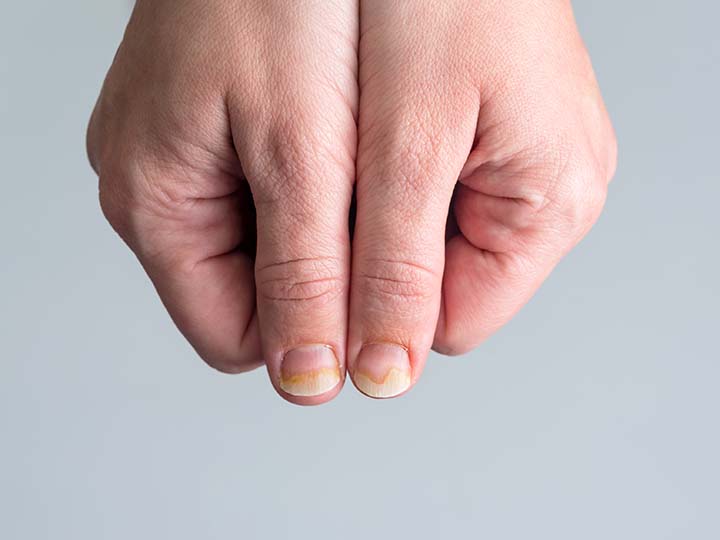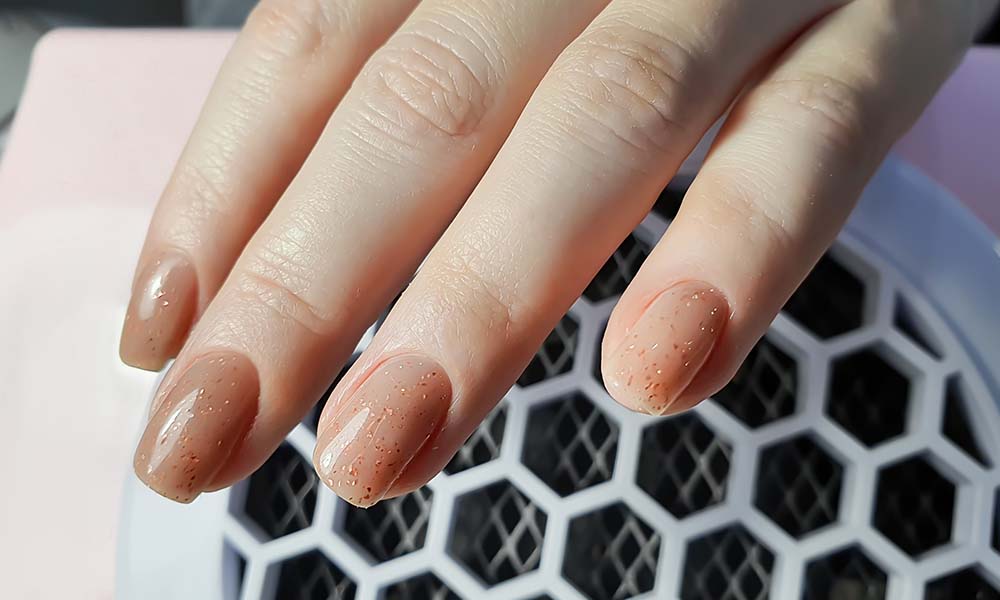The Trouble with Green Nail Fungus
Have you noticed a greenish tint on your nails? You may be dealing with green nail syndrome or green nail fungus, often caused by a bacterial infection from Pseudomonas aeruginosa. Unlike other fungal infections, green nail fungus is a bacterial problem that can make nails appear green, discolored, and sometimes thickened.
Wondering how to get rid of green nail fungus safely? This guide covers effective treatments, simple home remedies, and steps you can take to prevent it from coming back. Whether you’re dealing with an early-stage infection or a more severe case, here’s how to safely restore your nails to their healthy state.
What Causes Green Nail Fungus?
Green nail fungus isn’t caused by fungi like typical nail infections. Instead, it’s triggered by bacteria, specifically Pseudomonas aeruginosa. This bacterium thrives in moist, damp environments, making nails susceptible when they’re exposed to water or trapped moisture over long periods.
Common Causes:
- Prolonged exposure to water, especially under acrylic nails or tight-fitting shoes.
- Moisture trapped under artificial nails, nail polish, or gel manicures.
- Damaged nails that allow bacteria to enter.
- Untreated cuts or cracks around the nails, which create a breeding ground for bacteria.
Now, let’s dive into the remedies and treatments that can help get rid of green nail fungus effectively.
How to Get Rid of Green Nail Fungus Safely
While green nail fungus can be treated at home, it’s important to act quickly to prevent the infection from worsening or spreading. Here are the most effective remedies:
1. Remove Artificial Nails
If you have acrylic nails or gel manicures, the first step is to remove them. Artificial nails can trap moisture and create the perfect environment for bacteria to thrive. Allow your nails to breathe while treating the infection.
2. Vinegar Soak
Vinegar is a simple and effective home remedy for green nail fungus due to its acidic properties, which create an unfriendly environment for bacteria.
How to Use:
- Mix one part vinegar (white or apple cider vinegar) with two parts water.
- Soak your nails in the solution for 10-15 minutes daily.
- Rinse with water and dry your nails thoroughly.
3. Hydrogen Peroxide
Hydrogen peroxide is another powerful remedy for bacterial infections, including green nail fungus. It helps disinfect the area and remove harmful bacteria from the nail surface.
How to Use:
- Mix equal parts hydrogen peroxide and water in a small bowl.
- Soak the infected nails for 15 minutes daily.
- Dry your nails thoroughly after soaking.
4. Tea Tree Oil
Tea tree oil is known for its antibacterial and antiseptic properties, making it a great natural remedy for treating green nail fungus.
How to Use:
- Apply a few drops of tea tree oil directly to the infected nail.
- Massage it into the nail and surrounding skin.
- Repeat twice a day until the infection clears up.
5. Antibiotic Ointment
If your infection is mild, an over-the-counter antibiotic ointment (like Neosporin) can help reduce bacterial growth and treat green nail fungus. These ointments are easy to apply and are safe for most people.
How to Use:
- Clean the infected area thoroughly.
- Apply a thin layer of antibiotic ointment to the nail and surrounding skin.
- Cover with a bandage if necessary, and repeat twice a day.
6. Topical Antifungal Treatments
While green nail fungus is bacterial, a combination of antifungal creams and antibacterial treatments can provide effective results, especially if there’s a mix of fungus and bacteria.
How to Use:
- Apply an antifungal cream like clotrimazole to the affected nail, following the instructions on the product.
- Combine this treatment with an antibacterial approach like hydrogen peroxide or tea tree oil for added protection.
Professional Treatments for Green Nail Fungus
If home remedies don’t clear the infection or if it worsens, it’s best to consult a doctor or dermatologist. They may recommend stronger, professional treatments such as:
1. Prescription Antibiotics
For more severe bacterial infections, your doctor may prescribe an oral or topical antibiotic to target the bacteria causing green nail fungus. These treatments are typically more powerful than over-the-counter options.
2. Nail Debridement
In extreme cases, doctors may suggest nail debridement, a procedure where the infected part of the nail is removed to help the healthy nail grow back. This is usually done when the infection is causing significant nail damage or discomfort.
3. Laser Therapy
Some dermatologists offer laser therapy to kill bacteria and fungus in the nail bed. This is an advanced treatment that may be recommended if the infection is resistant to other methods.
How to Prevent Green Nail Fungus from Coming Back
Once you’ve successfully treated green nail fungus, it’s important to take steps to prevent it from returning. Here are some key tips for keeping your nails fungus-free:
1. Keep Nails Dry and Clean
Since moisture is a leading cause of bacterial growth, always keep your nails clean and dry. Be mindful of drying your nails thoroughly after washing your hands or taking a shower.
2. Limit Artificial Nails and Nail Polish
While acrylic nails and gel manicures look great, they can trap moisture and increase your risk of infection. Try to limit the use of artificial nails or give your nails a break between applications to allow them to breathe.
3. Use Antibacterial Nail Soaks
To prevent green nail fungus from returning, consider using a regular antibacterial soak (such as vinegar or tea tree oil) as part of your nail care routine, especially if your nails are frequently exposed to water.
4. Trim and File Regularly
Keep your nails trimmed and filed to prevent any damage or breaks that could allow bacteria to enter. Use clean nail tools, and avoid cutting nails too short, as this can increase the risk of infection.
5. Wear Breathable Footwear
If you often deal with sweaty feet, opt for shoes made of breathable materials like canvas or leather. Change your socks daily and avoid tight-fitting shoes that trap moisture.
Final Thoughts: Safely Getting Rid of Green Nail Fungus
Green nail fungus may be unsightly, but with the right remedies and consistent care, it can be treated effectively. Whether you opt for natural treatments like vinegar soaks or seek professional advice, addressing the infection early is the key to quick recovery. Keep your nails dry, clean, and free of moisture to prevent future infections and enjoy healthy, beautiful nails once again!
Love the skin you're in with Mersi's all-natural range. Shop now and embrace your beauty!
FAQs
- How long does it take to get rid of green nail fungus?
Treating green nail fungus can take a few weeks to several months, depending on the severity of the infection and the treatment method used. Consistent treatment is key to fully eliminating the bacteria.
- Can I paint over green nail fungus?
It’s not recommended to paint over a nail infected with green nail fungus. Nail polish can trap moisture and worsen the infection. Wait until the infection is fully healed before applying any nail polish.
- Can green nail fungus spread to other nails?
Yes, green nail fungus can spread if left untreated, especially in environments where the nails stay moist. Prompt treatment and good hygiene are essential to prevent the infection from spreading to other nails.
- Is green nail fungus contagious?
While green nail fungus is not highly contagious like other types of fungal infections, it can spread to other nails or people if they come into contact with the infected area. Keep your nails clean, and avoid sharing nail tools.
- What happens if green nail fungus is left untreated?
If left untreated, green nail fungus can lead to further nail damage, including thickening, cracking, and discoloration. In severe cases, it can cause the nail to separate from the nail bed.





Leave a comment
This site is protected by hCaptcha and the hCaptcha Privacy Policy and Terms of Service apply.